Elgin Cathedral, also known as the ‘Lantern of the North’, is a historic ruin in Elgin in the Grampian region of Scotland. A hub of ecclesiastical grandeur during the 13th century, the cathedral’s striking architecture features intricate stone carvings and Gothic-style towers which offer panoramic views of the surrounding landscape.
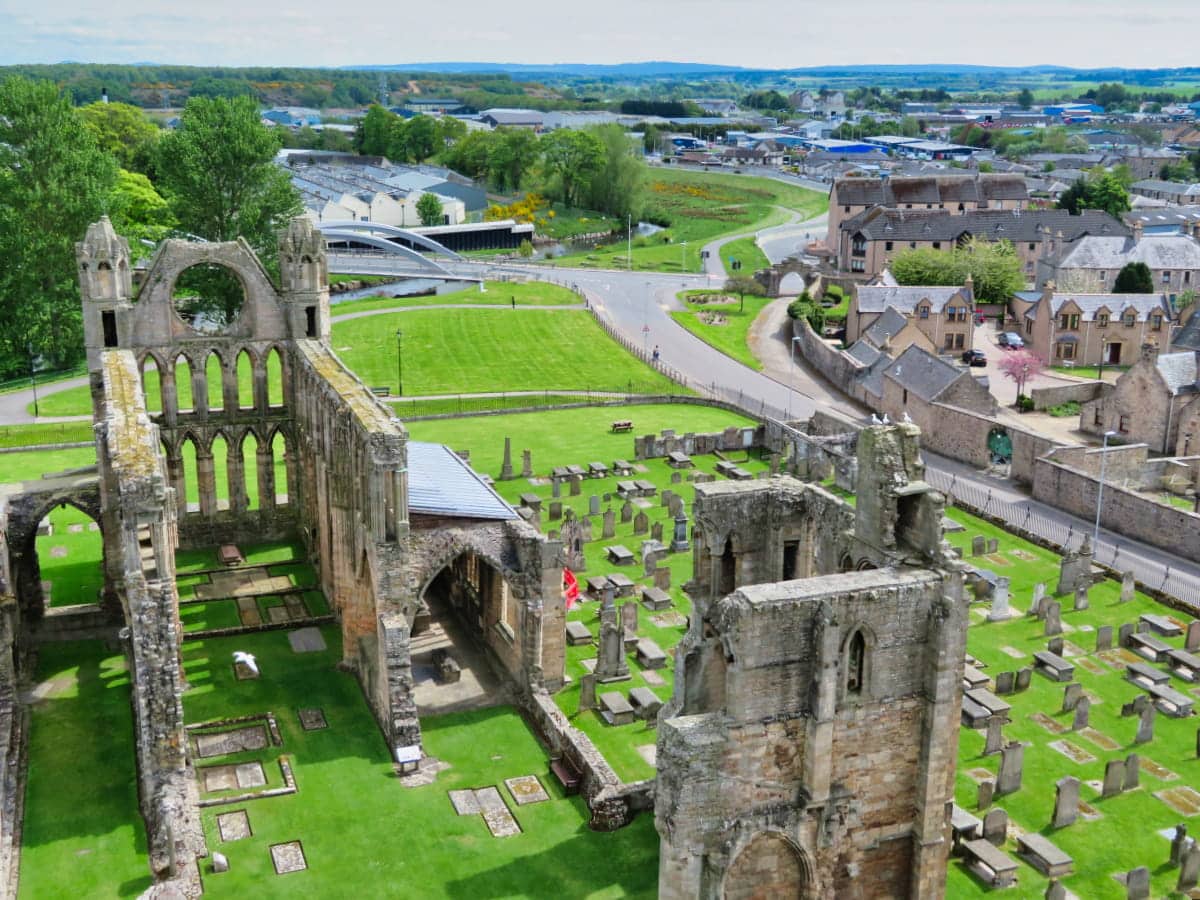
| Address: | King Street, Elgin, Moray, IV30 1HU |
| Opening Hours: | 1 Apr to 30 Sept: Daily, 9.30 am to 5.30 pm, last entry 4.30 pm 1 Oct to 31 Mar: Daily, 10 am to 4 pm, last entry 3 pm |
| Admission Price: | Adult (16-64yrs) £9.50 Concession (65yrs+ and unemployed) £7.50 Child (5-15yrs) £5.50 Family (1 adult, 2 children) £19.00 Family (2 adults, 2 children) £27.50 Family (2 adults, 3 children) £32.50 |
| Parking: | No on-site car park. Paid car parks in Elgin. |
| Contact: | 01343 547 171 |
| Facilities: | Toilets, partial disabled access, gift shop, guided tours, picnic area, water refill |
| Photos: | Virtual Tour YouTube Video |
Overview
Perhaps the highlight of any visit to Elgin is a visit to the glorious cathedral that has been the focal point of the town since building work began on it in 1224 AD. Although much of the stonework is now in ruin, a walk around the building will no doubt impress visitors with its size, and it’s no surprise to learn that the cathedral has been dubbed the ‘Lantern of the North’.
Unfortunately, the care that went into creating this 800-year-old cathedral didn’t last, and by the end of the 16th century it had been left to fall into ruin.
In addition to the dramatic architecture, there are lots of oddities to discover during a tour of this beautiful building, like the stone bishop in the nave that looks like a giant chess piece and the enormous five-metre-high stone slab that’s Scotland’s tallest gravestone. Another highlight is the Elgin Stones display which showcases over one hundred mediaeval carvings that date back to the 1200s.
Many of these carvings are remarkably well preserved and you’ll see examples of ghoulish faces, plants, animals, and flowers in the exhibition. However, what’s most intriguing is that some of these carvings have writing on them that historians haven’t yet been able to decipher, and possibly never will.

The Highlights
1: Elgin Cathedral is often referred to as ‘The Lantern of the North’. This magnificent ruin is a superb example of Gothic architecture. One standout feature is the octagonal chapter house, which has been described as one of Scotland’s most ambitious pieces of mediaeval architecture.
2: Visitors can climb up the towers and enjoy panoramic views of the town of Elgin and the surrounding Moray countryside. You can see as far as the Moray Firth.
3: The cathedral has a rich history dating back to its consecration in 1224. It was one of Scotland’s most important cathedrals in the mediaeval era, and you can learn about its turbulent history which includes fires and attacks by angry mobs.
Visiting Tips
1: Before visiting Elgin Cathedral, check the opening hours and days. It’s usually open from 10 a.m. to 4 p.m., but these hours can change depending on the season and special events.
2: Scotland’s weather can be unpredictable, so it’s always a good idea to carry a jacket or wear layers. Also, remember to wear shoes with good grips as you’ll be walking up some steep steps.
3: To fully appreciate the history of Elgin Cathedral, consider hiring a tour guide or renting an audio tour. They’ll provide you with interesting historical facts and stories about the cathedral that you wouldn’t know otherwise.
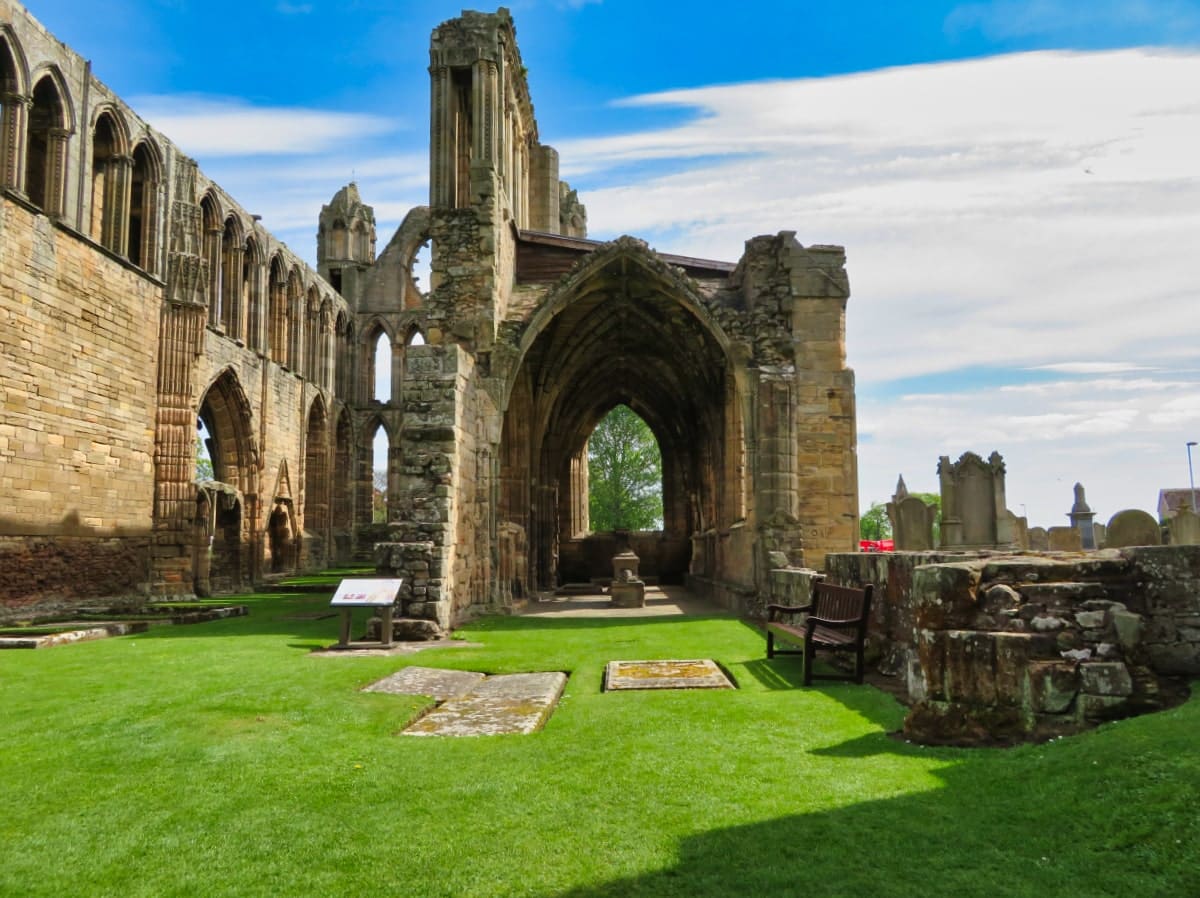
Tourist Information
Starting in the courtyard, you can admire the statues in the cathedral’s walls, with the carved faces of people and animals in the octagonal chapter house being particularly interesting. Then, heading into the cathedral towers, you can see some of the older stonework in the display cases in the exhibition rooms before making your way up the winding staircase to the viewing platform.
The views from the top of the tower are amazing, stretching across Elgin and the countryside beyond, so be sure to bring your camera with you.
If you’d like to visit other attractions in the area, I recommend paying a little extra and upgrading your ticket to include a visit to nearby Spynie Palace which is the former residence of the abbots and priests of Elgin Cathedral.
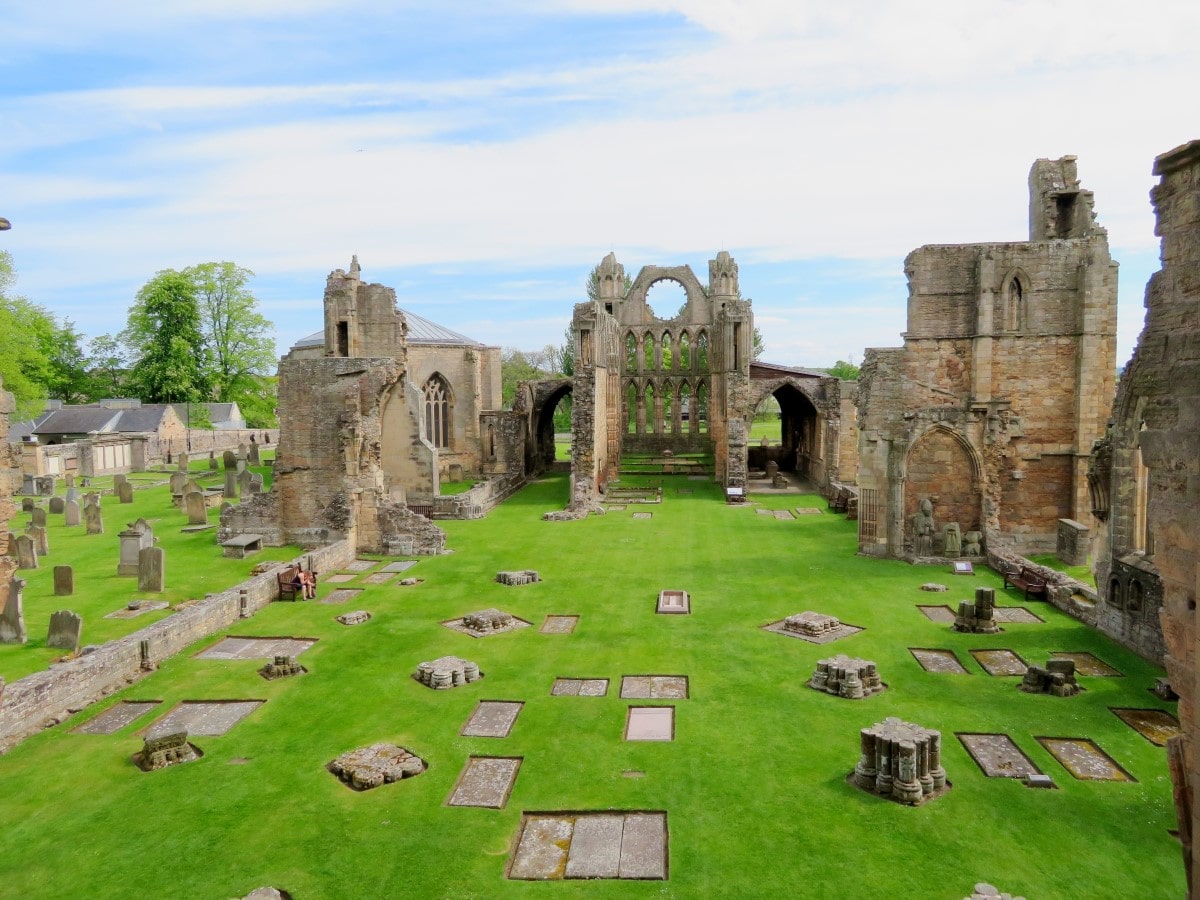
History
Two important events that occurred at the cathedral were the inferno that engulfed the building when the Earl of Buchan, Alexander Stewart, attacked it with his troops in 1390, and the subsequent incendiary attack in 1402 by the followers of the Lords of the Isles (the western island rulers who had their lands seized by King James IV of Scotland).
Eventually, the services of Elgin Cathedral were transferred to the parish church of St. Giles which meant the building slowly began to fall into disrepair.
In 1567, the waterproofing lead that lined the roof was removed, which signalled the beginning of the end for the cathedral, and before long, it was completely ruined. Fortunately, the public found a new love for the building in the 1800s, after which it became a popular visitor attraction.
Since then, Historic Environment Scotland has renovated the stonework and expanded the site as an educational attraction with exhibitions showcasing the cathedral’s intricate stone carvings, some of which are over 800 years old.
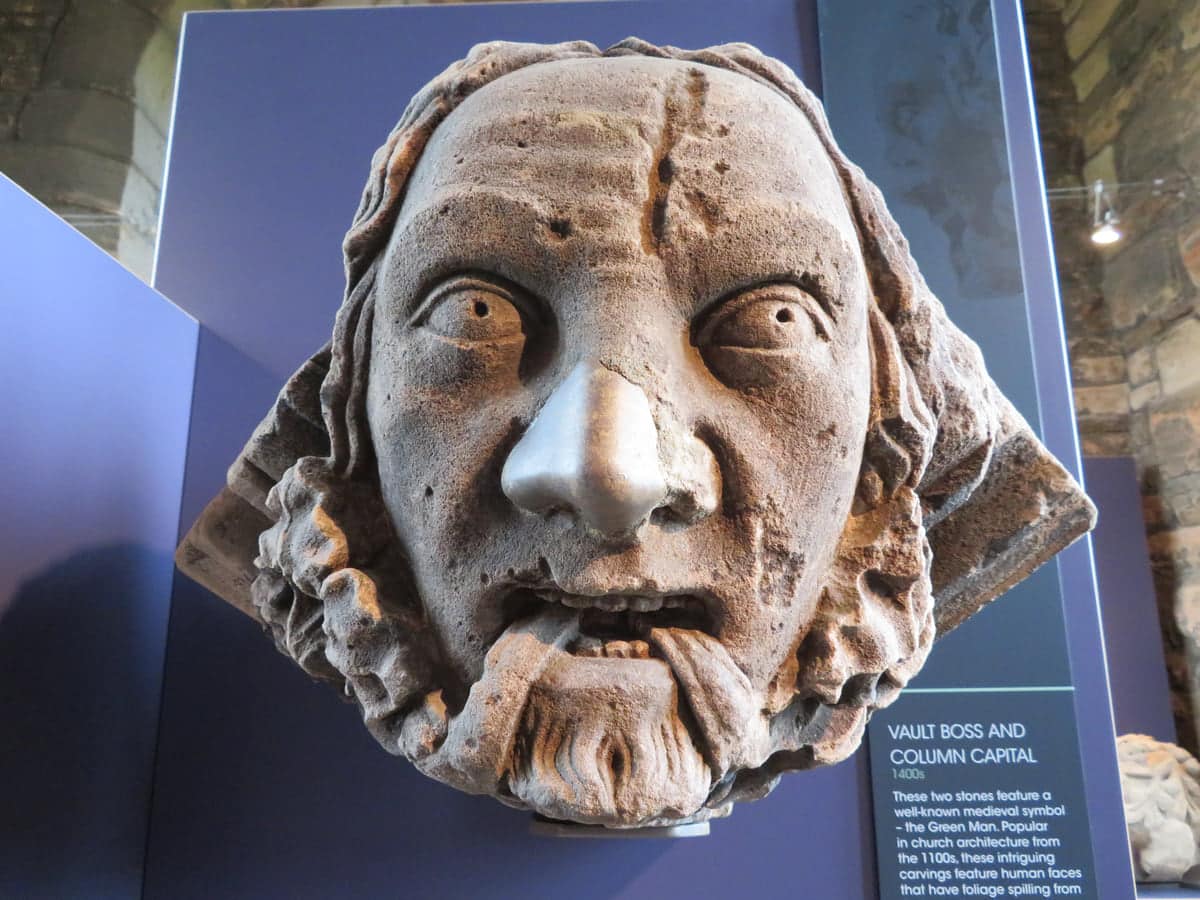
Things to Do
Exploring the Cathedral Ruins: Unveil the religious history of Scotland as you walk through the majestic ruins of Elgin Cathedral. Known as the ‘Lantern of the North’, it’s a testament to Scottish architecture from the 13th century and its twin towers are amongst the finest examples of medieval masonry in the country.
Climbing the Tower: Challenge yourself and climb the steep set of steps in the North Tower. The climb might be strenuous, but the panoramic view of Elgin and the Moray countryside from the top is a sight to behold and well worth the effort involved to get up there.
Visit the Chapter House: Don’t miss the octagonal Chapter House, one of the best-preserved buildings of its type in the UK. Marvel at the intricate stonework and absorb the atmosphere of the interior.
Photography: The cathedral’s picturesque ruins, mediaeval stone carvings, and extensive graveyard provide excellent subjects for photography aficionados.
Picnic in Cooper Park: After a day of exploration, relax with a picnic on the tranquil green grounds of nearby Cooper Park (postcode IV30 1HS). The park has toilets, picnic benches, a boating pond and a pavilion, plus it’s next to a car park, making it a good destination for first-time visitors to head to.
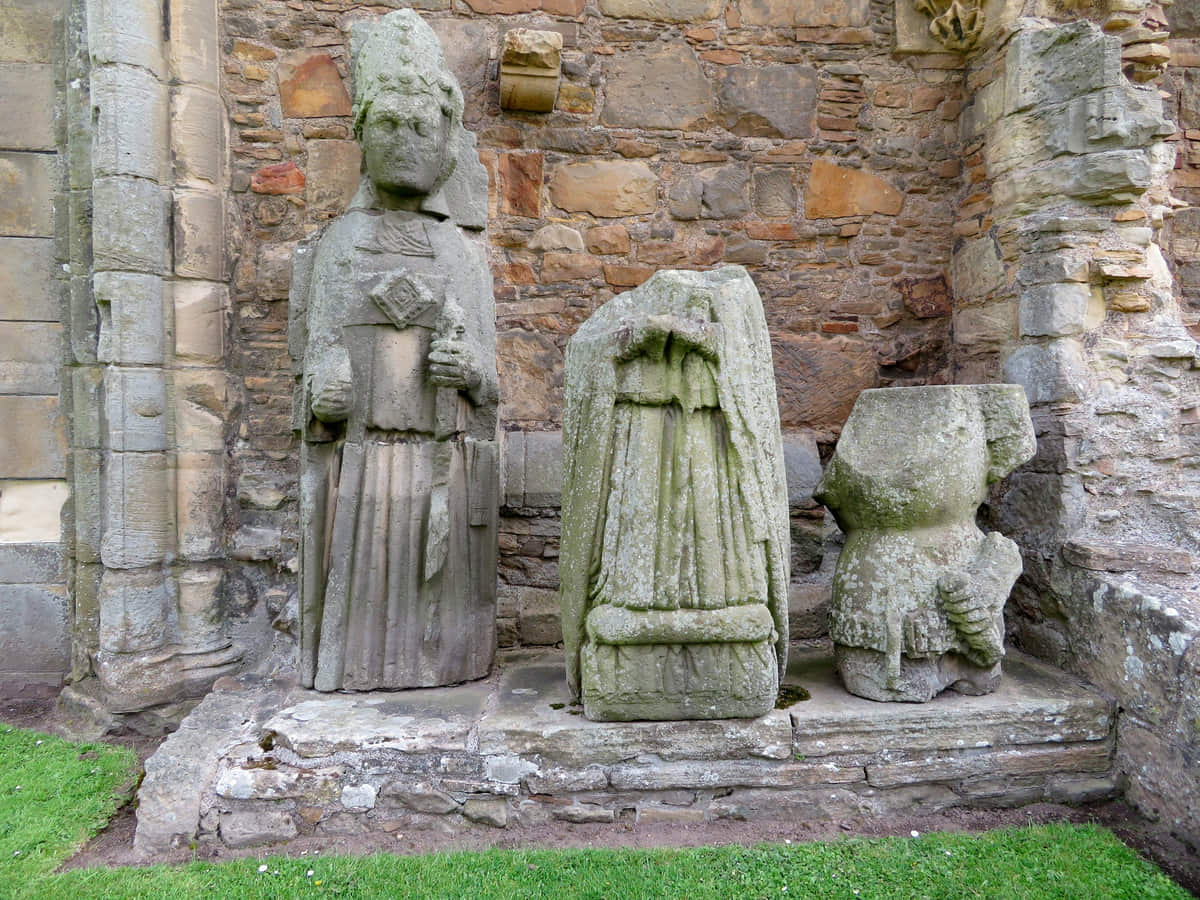
Things to Do Nearby
Lossiemouth East Beach. Lossiemouth IV30 8NQ. 11-minute drive.
An exceptionally long golden sand beach that faces the North Sea. Due to its windswept location it’s a popular place for water sports. It is also a prime marine wildlife-spotting site thanks to the dolphins and seals that are frequently seen offshore.
Spynie Palace. Elgin IV30 5QG. 8-minute drive.
A partially-ruined 14th-century bishop’s palace that served Elgin Cathedral for hundreds of years. The 72-foot tower house is one of the tallest in Scotland.
Duffus Castle. Elgin IV30 5RH. 10-minute drive.
This is a medieval ruin situated on raised earthworks that date from the 12th century. The castle was inhabited for nearly 500 years before falling into ruin, and it’s now managed by Historic Environment Scotland.
Elgin Museum. 1 High St, Elgin IV30 1EQ. 6-minute walk.
Elgin Museum serves to educate and inform visitors about the history of Elgin as well as the surrounding area. On display are a variety of exhibits of natural history, geology and archaeology.
Moray Motor Museum. Bridge St, Elgin IV30 4DE. 9-minute walk.
This museum is housed in a converted grain mill in the centre of Elgin. There is a varied collection of vehicles inside including vintage cars, motorbikes and model cars.
Frequently Asked Questions
Why is Elgin no longer a city?
Elgin is a town and former cathedral city and royal burgh located in Moray, Scotland. The town has never been officially decreed a city. There are 7 official cities in Scotland which are; Aberdeen, Dundee, Edinburgh, Glasgow, Inverness, Perth and Stirling.
What is Elgin famous for?
Elgin is famous for its cathedral (nicknamed ‘the lantern of the north’) as well as its whisky distilling and wool milling industries. The town is also famous for being home to the prestigious Gordonstoun School.
Why is Elgin Cathedral in ruins?
Elgin Cathedral was abandoned and left to fall into ruin after the Scottish Reformation of 1560.
The Scottish Parliament decreed that no cathedral in Scotland could continue as a place of worship unless they were used as parish churches.
In 1567 the lead lining was removed from the cathedral’s rafters and the building subsequently suffered irreparable weather damage.
Who burnt down Elgin Cathedral?
Elgin Cathedral was severely damaged by fire following an attack by Alexander Stewart, Earl of Buchan, in 1390.






